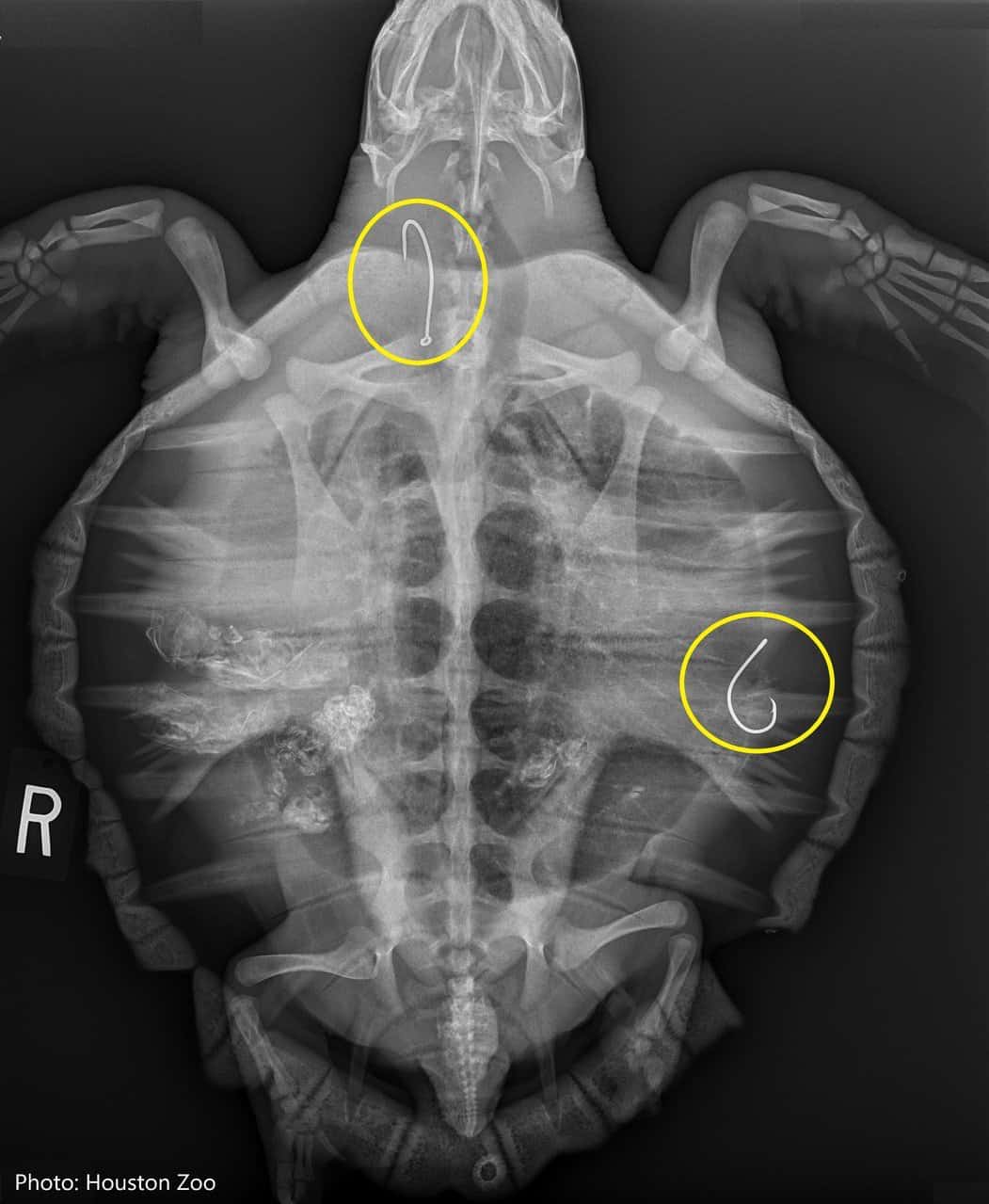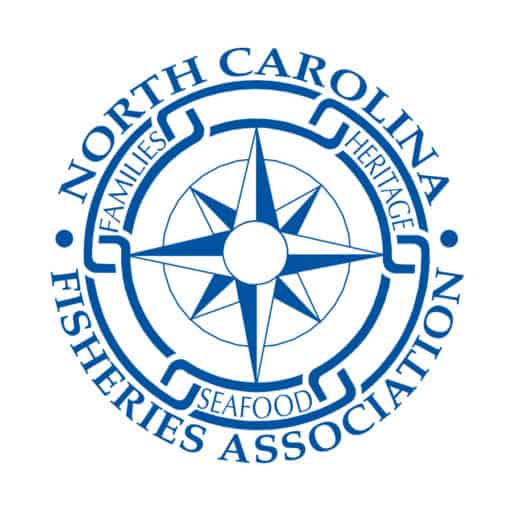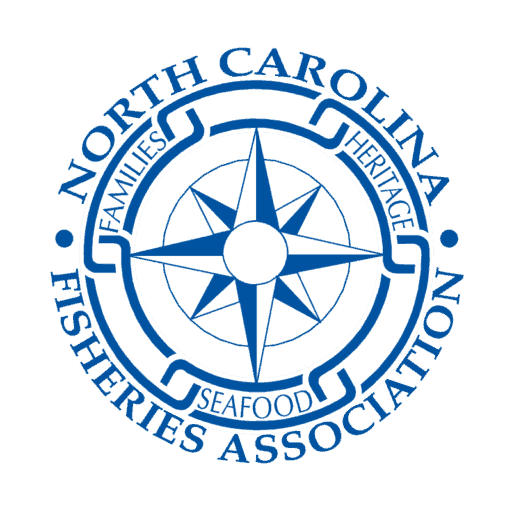
Sea Turtles And Fishing Gear
Since groups like NC Coastal Conservation Association and the NC Coastal Fisheries Reform Group have decided to wage a smear campaign yet again on North Carolina’s Incidental Take Permit (ITP) by spreading lies about the ITP, our large mesh gill nets, and why and how our fisheries operates under the ITP, we have decided it is past time to get to the real facts.
First, I will briefly explain the Endangered Species Act (ESA). Here is how the Environmental Protection Agency summarizes the Act.
“The ESA provides a program for the conservation of threatened and endangered plants and animals and the habitats in which they are found. The law requires federal agencies, in consultation with the U.S. Fish and Wildlife Service and/or the NOAA Fisheries Service, to ensure that actions they authorize, fund, or carry out are not likely to jeopardize the continued existence of any listed species or result in the destruction or adverse modification of designated critical habitat of such species. The law also prohibits any action that causes a “taking” of any listed species of endangered fish or wildlife.”
“Take” is defined in the ESA (and as referred to in the article) in Section 3(19) “The term “take” means to harass, harm, pursue, hunt, shoot, wound, kill, trap, capture, or collect, or to attempt to engage in any such conduct.”
Section 10 of the ESA discusses exceptions to the Act and sets guidelines for applying for such exceptions. One exception the ESA mentions is “taking otherwise prohibited by section 9(a)(1)(B) if such taking is incidental to, and not the purpose of, the carrying out of an otherwise lawful activity.”
A “lawful activity” such as large mesh gill nets in NC.
Section 10 sets guidelines for receiving an exception and also requires submitting a conservation plan that specifies:
(i) the impact which will likely result from such taking;
(ii) what steps the applicant will take to minimize and mitigate such impacts, and the funding that will be available to implement such steps;
(iii) what alternative actions to such taking the applicant considered and the reasons why such alternatives are not being utilized; and
(iv) such other measures that the Secretary may require as being necessary or appropriate for purposes of the plan.
After the permit application is submitted it must go out for public comment. Then the Secretary of the Interior will review the application to determine if:
(i) the taking will be incidental;
(ii) the applicant will, to the maximum extent practicable, minimize and mitigate the impacts of such taking;
(iii) the applicant will ensure that adequate funding for the plan will be provided;
(iv) the taking will not appreciably reduce the likelihood of the survival and recovery of the species in the wild; and
If the application meets these requirements, then the Secretary of the Interior will approve the permit and issue any other terms or conditions deemed necessary.
Our specific ITP plan includes gill net modifications, reduced soak time of gear, observer coverage, authorization of handling of sea turtles, and collection of sea turtle data.
The data collected from observers, volunteers, and individual reports are all documented by the North Carolina Wildlife Resource Commission (NCWRC). These records include all sea turtle strandings (which include cold stunning, entanglements, vessel strikes, disease, and others) in NC and can be viewed at:
This website also contains a lot of other helpful information about how to report strandings, information on sea turtle nesting, tracking tagged sea turtles, volunteer opportunities and much more.
One such category they use to codify different types of sea turtle strandings is “entanglement-incidental”. This category includes sea turtles who were entangled in gill nets, recreational hook and line, power plant intakes, dredge operations, ropes, etc.
So, to further break down the entanglements in this category, North Carolina Fisheries Association (NCFA) requested a detailed report of all incidental captures of sea turtles in NC from 2012 to 2021 from Sarah A. Finn, the Coastal Wildlife Diversity Biologist at NCWRC.
From the period of 2012-2021:
-383 sea turtle takes were reported in large mesh gill nets
-419 sea turtles takes were reported in recreational hook and line gear
Large Mesh Gill Net Takes
To further break down the 383-sea turtle reported entanglements in large mesh gill nets, 84 died and 11 were sent to rehab centers. 288 (75%) of these takes resulted in healthy sea turtle releases as stated in the observer reports.
Under the ITP, the reported large mesh gill net takes are multiplied by percent of observer coverage of total trips. For example, if 10% of trips are observed, then the number of observed sea turtle takes is multiplied by 10. If in any year the total of estimated takes reaches the number allowed by the ITP, the large mesh gill net fishery is closed.
Commercial fishermen are continually striving to reduce our interactions with sea turtles. We continue to work with sea turtle experts to remove our gear from areas of high sea turtle concentrations and during times of the day when sea turtles are most active (daylight hours). We also continue to train and educate observers and commercial fishermen to properly handle sea turtles during interactions. The ITP is working exactly how it is supposed to work.
Recreational Hook and Line Takes
To further breakdown the 419 sea turtles recorded interactions in recreational fishing gear, 33 died and 129 were sent to sea turtle hospitals. Most of the sea turtles that received care were single hook removals but 10 cases removed multiple hooks from a single sea turtle and in 2 cases fishing line was wrapped around the sea turtle with rod and reels still attached. The remaining 61% of recreational sea turtles interactions had varied release outcomes, mainly due to no real observer program for recreational sea turtle takes nor any conservation plan in place to help recreational anglers minimize or plan for sea turtle interactions.
A significant number of these reported recreational sea turtle takes resulted in releases with hook and line still attached or swallowed by the sea turtle. Another item to note from the details of recreational reported sea turtle takes is the many types of hooks and baits recorded. Recreational gear recorded in these takes included: j-hooks, circle hooks, treble hooks, artificial bait, monofilament and braid line.
Conclusions
When you look at the NCWRC data concerning sea turtle interactions in our state there is no room for opinions or smear campaigns. Large mesh gill nets do interact with sea turtles and sadly our nets sometimes result in sea turtle deaths. But our ITP makes us accountable for our sea turtle takes and has greatly reduced our sea turtle interactions under the ITP.
A recent study (including 3 authors from the NOAA’s Southeast Science Center) modeling sea turtle bycatch in commercial and recreational fisheries concluded that “Over the period modeled (1996–2017), bycatch in recreational fisheries was estimated to be greater than the sum of bycatch that occurred in commercial fisheries that have historically been considered high risks to turtles (e.g., those using trawls, gillnets, and bottom longlines).”
https://www.sciencedirect.com/science/article/pii/S2589004223000548
The data collected by NCWRC on takes of sea turtles lines up with the data collected in this study. Large mesh gill nets is not the only fishery in North Carolina that needs an ITP. I would hope, but I am not sure, if all components of the recreational fishery would comply with the “incidental take” provision of Section 10. For one, I don’t think targeting sea turtles to catch Cobia qualities as incidental. Search “fishing for cobia turtle” on the internet to find plenty of Cobia fishing tips that include harassing sea turtles.
(Listen closely at 2:20 but be sure to notice the “conservation” organization sponsoring the video)
Another important thing to remember is, the sea turtle takes recorded by the NCWRC are all “reported takes”. Large mesh gill nets operate under an ITP and therefore has a conservation plan that requires observer coverage. Total large mesh gill net takes can easily be estimated with this plan.
The recreational fishery does not have an ITP. Therefore, there is no set standard to observe a portion of recreational trips to properly estimate the true recreational impact on sea turtle populations.
With reported data already showing more takes in the recreational fishery, I think that if the recreational fishery was held to the same standards in our commercial fishing ITP, extrapolated recreational sea turtle takes would far exceed those in our large mesh gill net fishery.
The facts are there on record.
NCWRC gathers and records sea turtle takes, the NC Division of Marine Fisheries is aware of the records and provides much of this data, the National Park Service reports sea turtle strandings, and NOAA scientists coauthored the study I cited.
With all of these Federal and State agencies having all of this information on recreational anglers violating the ESA, why has none of these agencies acted to require a conservation plan to reduce recreational sea turtle takes and a recreational fishing ITP?
If there are any true conservation organizations out there who care about the health of sea turtles, please contact us.
Thomas Newman
Fisheries Liaison
Speckled Trout (Spotted Seatrout) Scoping Meetings This Week
The North Carolina Division of Marine Fisheries (DMF) is holding four meetings and taking public comment for the scoping phase of the upcoming speckled trout fisheries management plan (FMP). The first meeting will also be online.
This is the time to let your voices be heard!
Scoping document can be found here: Spotted Seatrout Scoping Document
Here are the main points:
-overfishing is occurring for speckled trout.
-DMF is looking to reduce total removals by 15% to 40%.
-Speckled trout removals are 90% recreational.
-commercial harvest has been severely constrained since 2011 when the 75-fish
was implemented.
-possible management measures to reduce harvest include but are not limited to:
-Season closure
-Trip limits
-Bag limits
-Size limits (e.g., minimum, maximum, or slot limits)
-Adaptive management
-DMF is looking for input on how, when, where you fish, and any ideas to end
overfishing
Meetings
Tuesday, March 14
6 p.m. to 8 p.m.
McKimmon Conference and Training Center 1101 Gorman St.
Raleigh, NC 27606
This meeting will be online as well:
https://deq.nc.gov/about/divisions/marine-fisheries/upcoming-events
Thursday, March 16
6 p.m. to 8 p.m.
NC Cooperative Extension, Currituck County Center 120 Community Way #120
Barco, NC 27917
Tuesday, March 21
6 p.m. to 8 p.m.
New Bern-Craven County Public Library 400 Johnson St.
New Bern, NC 28560
Thursday, March 23
6 p.m. to 8 p.m.
Cape Fear Community College 411 N. Front St.
Wilmington, NC 28401
Submit Online Public Comment Here

